-
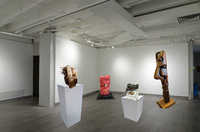 Little Theater Right Wing
Little Theater Right Wing Group 1 Maquette
-
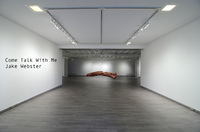 Moreau Entrance
Moreau Entrance Group 1 Maquette
-
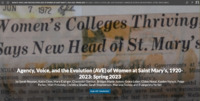 Agency, Voice, and the Evolution (AVE) of Women at Saint Mary’s, 1920-2023: Spring 2023
Agency, Voice, and the Evolution (AVE) of Women at Saint Mary’s, 1920-2023: Spring 2023 In the spring of 2023, thirteen students at Saint Mary's College took the Digital Humanities Project Lab course offered through the English Department and affiliated with the Digital and Public Humanities program. This course explored the power of narrative as a tool for understanding our world, our region, and our community.
-
 The Peripheral Manuscripts Project
The Peripheral Manuscripts Project This project, hosted at Indiana University Bloomington, will digitize and create item-level metadata for 74 codices and 617 medieval manuscript fragments from twenty-two primarily non-R1 Midwestern institutions. Indiana University Libraries’ Digital Collection Services will scan or photograph holdings, and researchers at IU Bloomington, Loyola University Chicago, and Saint Mary’s College will create metadata for these objects, including many items unrecorded in previous bibliographical surveys. Resulting item descriptions and high-resolution, IIIF-compliant images will be made freely available through a digital consortial repository hosted by Indiana University Libraries.
This project focuses on small collections that have not been economically feasible for holding institutions to digitize on their own and thus will bring a wealth of previously inaccessible and uncatalogued material to scholarly consciousness. This new material will be aggregated with existing digitized collections to yield a more comprehensive understanding of North American manuscript holdings.
-
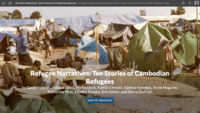 Refugee Narratives: Ten Stories of Cambodian Refugees
Refugee Narratives: Ten Stories of Cambodian Refugees As a part of ENLT 290: Digital Humanities Project Lab, students edited a series of first-person refugee accounts collected by Sister Paula Goettlemann in a small journal during her time in Cambodia, and used these narratives as the basis for the digital exhibition. They also included additional items held in the Sisters of the Holy Cross Archives and Records that illustrated the work of the Sisters of the Holy Cross in Cambodia both during and following the oppressive Khmer Rouge regime.
-
 The Displacement Project: Archival Storytelling and the Sisters of the Holy Cross
The Displacement Project: Archival Storytelling and the Sisters of the Holy Cross An article written by Dr. Laura Williamson, published by Humanities for All on Oct. 18, 2023.
-
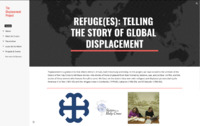 Displacement Project Website
Displacement Project Website Link to Project Website
-
 Cambodia Archival Work
Cambodia Archival Work Dr. Jessalyn Bird works with US Civil War material in the reading room of the congregational archives.
-
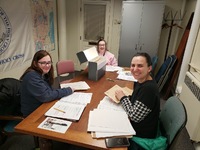 US Civil War Archival Work
US Civil War Archival Work Students from the HUST 290 course work with US Civil War material in the reading room of the congregational archives.
-
 Archival Research (1)
Archival Research (1) Mary E. Coleman, Dr. Sarah Noonan, and Dr. Jessalyn Bird work on the displacement project in the reading room of the congregational archives.
-
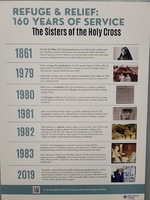 Timeline Poster
Timeline Poster Poster featuring notable events from presentation of Displacement Project on November 3, 2021.
-
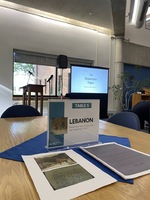 View from Lebanon Table
View from Lebanon Table Table pertaining to work done in relation to Lebanon at presentation of Displacement Project on November 3, 2021.
-
 Displayed Materials (3)
Displayed Materials (3) Attendees of presentation of Displacement Project on November 3, 2021 study displayed materials, instance 3.
-
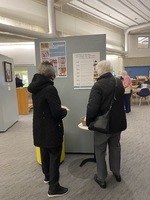 Posters at Event
Posters at Event Attendees of presentation of Displacement Project on November 3, 2021 study event posters.
-
 Displayed Materials (2)
Displayed Materials (2) Attendees of presentation of Displacement Project on November 3, 2021 study displayed materials, instance 2.
-
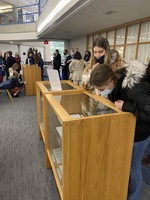 Displayed Materials (1)
Displayed Materials (1) Attendees of presentation of Displacement Project on November 3, 2021 study displayed materials, instance 1.
-
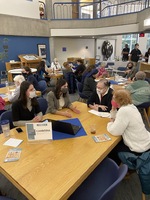 Discussing Cambodia
Discussing Cambodia Attendees of presentation of Displacement Project on November 3, 2021 discuss the project as it relates to Cambodia, led by Kaitlin Emmett.
-
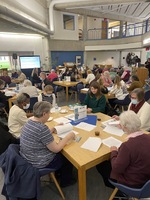 Perusing Materials
Perusing Materials Attendees of presentation of Displacement Project on November 3, 2021 look through U.S. Civil War archival materials, with discussion led by Marirose Osborne.
-
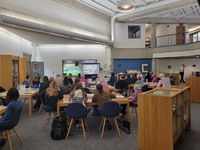 Video Presentation
Video Presentation Attendees of presentation of Displacement Project on November 3, 2021 watch a video about the project.
-
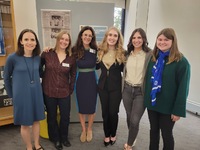 Group Photo
Group Photo Photo from presentation of Displacement Project on November 3, 2021, featuring Dr. Jessalyn Bird, Dr. Sarah Noonan, Dr. Laura Williamson, Mary E. Coleman, Kaitlyn Emmet, and Marirose Osborne.
-
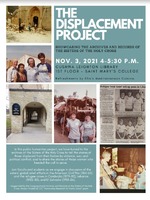 Event Flyer
Event Flyer Event flyer from presentation of Displacement Project on November 3, 2021.
-
 Displacement Project Details
Displacement Project Details
-
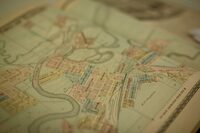 Elkhart County Historical Museum
Elkhart County Historical Museum In 1968, the Elkhart County Historical Museum opened as a partnership between the newly-established Elkhart County Parks Department and the Elkhart County Historical Society. Visitors to the Museum can explore the many people, places, and events that make up the history of Elkhart County.
The collection features over 30,000 artifacts reflecting the county’s cultural heritage and help tell the story of Elkhart County in both permanent and temporary exhibits.
-
 Michiana Jewish Historical Society
Michiana Jewish Historical Society The Michiana Jewish Historical Society was founded in the mid-1990s to document and share the story of Jewish life in the Michiana area with current and future generations. The founders, led by Mendel, Louis, and David Piser, Chuck Simon, and others formed an organization whose purpose is to record that history, make it available to the Jewish and general communities, and promote understanding and appreciation of the Jewish experience in Michiana.
Today, in addition to MJHS’s original mission (to be a repository for photos, stories, and artifacts that provide a comprehensive record of the Michiana Jewish community), we also focus on Family Education and Programming so that adults and children can learn and appreciate more about their family’s history, wherever that history began!
-
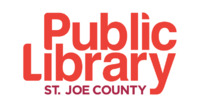 St. Joseph County Public Library
St. Joseph County Public Library The St. Joe County Public Library is home to a beautifully renovated Main Library, new Community Learning Center, digital media studio, Local and Family History department and nine branch locations in St. Joseph County. Library visitors can now browse countless books and media in print and digital formats and request home delivery. This beloved Library system was once a Reading Room on Michigan street and previously known as the South Bend Public Library.
 Little Theater Right Wing Group 1 Maquette
Little Theater Right Wing Group 1 Maquette Moreau Entrance Group 1 Maquette
Moreau Entrance Group 1 Maquette Agency, Voice, and the Evolution (AVE) of Women at Saint Mary’s, 1920-2023: Spring 2023 In the spring of 2023, thirteen students at Saint Mary's College took the Digital Humanities Project Lab course offered through the English Department and affiliated with the Digital and Public Humanities program. This course explored the power of narrative as a tool for understanding our world, our region, and our community.
Agency, Voice, and the Evolution (AVE) of Women at Saint Mary’s, 1920-2023: Spring 2023 In the spring of 2023, thirteen students at Saint Mary's College took the Digital Humanities Project Lab course offered through the English Department and affiliated with the Digital and Public Humanities program. This course explored the power of narrative as a tool for understanding our world, our region, and our community. The Peripheral Manuscripts Project This project, hosted at Indiana University Bloomington, will digitize and create item-level metadata for 74 codices and 617 medieval manuscript fragments from twenty-two primarily non-R1 Midwestern institutions. Indiana University Libraries’ Digital Collection Services will scan or photograph holdings, and researchers at IU Bloomington, Loyola University Chicago, and Saint Mary’s College will create metadata for these objects, including many items unrecorded in previous bibliographical surveys. Resulting item descriptions and high-resolution, IIIF-compliant images will be made freely available through a digital consortial repository hosted by Indiana University Libraries. This project focuses on small collections that have not been economically feasible for holding institutions to digitize on their own and thus will bring a wealth of previously inaccessible and uncatalogued material to scholarly consciousness. This new material will be aggregated with existing digitized collections to yield a more comprehensive understanding of North American manuscript holdings.
The Peripheral Manuscripts Project This project, hosted at Indiana University Bloomington, will digitize and create item-level metadata for 74 codices and 617 medieval manuscript fragments from twenty-two primarily non-R1 Midwestern institutions. Indiana University Libraries’ Digital Collection Services will scan or photograph holdings, and researchers at IU Bloomington, Loyola University Chicago, and Saint Mary’s College will create metadata for these objects, including many items unrecorded in previous bibliographical surveys. Resulting item descriptions and high-resolution, IIIF-compliant images will be made freely available through a digital consortial repository hosted by Indiana University Libraries. This project focuses on small collections that have not been economically feasible for holding institutions to digitize on their own and thus will bring a wealth of previously inaccessible and uncatalogued material to scholarly consciousness. This new material will be aggregated with existing digitized collections to yield a more comprehensive understanding of North American manuscript holdings. Refugee Narratives: Ten Stories of Cambodian Refugees As a part of ENLT 290: Digital Humanities Project Lab, students edited a series of first-person refugee accounts collected by Sister Paula Goettlemann in a small journal during her time in Cambodia, and used these narratives as the basis for the digital exhibition. They also included additional items held in the Sisters of the Holy Cross Archives and Records that illustrated the work of the Sisters of the Holy Cross in Cambodia both during and following the oppressive Khmer Rouge regime.
Refugee Narratives: Ten Stories of Cambodian Refugees As a part of ENLT 290: Digital Humanities Project Lab, students edited a series of first-person refugee accounts collected by Sister Paula Goettlemann in a small journal during her time in Cambodia, and used these narratives as the basis for the digital exhibition. They also included additional items held in the Sisters of the Holy Cross Archives and Records that illustrated the work of the Sisters of the Holy Cross in Cambodia both during and following the oppressive Khmer Rouge regime. The Displacement Project: Archival Storytelling and the Sisters of the Holy Cross An article written by Dr. Laura Williamson, published by Humanities for All on Oct. 18, 2023.
The Displacement Project: Archival Storytelling and the Sisters of the Holy Cross An article written by Dr. Laura Williamson, published by Humanities for All on Oct. 18, 2023. Displacement Project Website Link to Project Website
Displacement Project Website Link to Project Website Cambodia Archival Work Dr. Jessalyn Bird works with US Civil War material in the reading room of the congregational archives.
Cambodia Archival Work Dr. Jessalyn Bird works with US Civil War material in the reading room of the congregational archives. US Civil War Archival Work Students from the HUST 290 course work with US Civil War material in the reading room of the congregational archives.
US Civil War Archival Work Students from the HUST 290 course work with US Civil War material in the reading room of the congregational archives. Archival Research (1) Mary E. Coleman, Dr. Sarah Noonan, and Dr. Jessalyn Bird work on the displacement project in the reading room of the congregational archives.
Archival Research (1) Mary E. Coleman, Dr. Sarah Noonan, and Dr. Jessalyn Bird work on the displacement project in the reading room of the congregational archives. Timeline Poster Poster featuring notable events from presentation of Displacement Project on November 3, 2021.
Timeline Poster Poster featuring notable events from presentation of Displacement Project on November 3, 2021. View from Lebanon Table Table pertaining to work done in relation to Lebanon at presentation of Displacement Project on November 3, 2021.
View from Lebanon Table Table pertaining to work done in relation to Lebanon at presentation of Displacement Project on November 3, 2021. Displayed Materials (3) Attendees of presentation of Displacement Project on November 3, 2021 study displayed materials, instance 3.
Displayed Materials (3) Attendees of presentation of Displacement Project on November 3, 2021 study displayed materials, instance 3. Posters at Event Attendees of presentation of Displacement Project on November 3, 2021 study event posters.
Posters at Event Attendees of presentation of Displacement Project on November 3, 2021 study event posters. Displayed Materials (2) Attendees of presentation of Displacement Project on November 3, 2021 study displayed materials, instance 2.
Displayed Materials (2) Attendees of presentation of Displacement Project on November 3, 2021 study displayed materials, instance 2. Displayed Materials (1) Attendees of presentation of Displacement Project on November 3, 2021 study displayed materials, instance 1.
Displayed Materials (1) Attendees of presentation of Displacement Project on November 3, 2021 study displayed materials, instance 1. Discussing Cambodia Attendees of presentation of Displacement Project on November 3, 2021 discuss the project as it relates to Cambodia, led by Kaitlin Emmett.
Discussing Cambodia Attendees of presentation of Displacement Project on November 3, 2021 discuss the project as it relates to Cambodia, led by Kaitlin Emmett. Perusing Materials Attendees of presentation of Displacement Project on November 3, 2021 look through U.S. Civil War archival materials, with discussion led by Marirose Osborne.
Perusing Materials Attendees of presentation of Displacement Project on November 3, 2021 look through U.S. Civil War archival materials, with discussion led by Marirose Osborne. Video Presentation Attendees of presentation of Displacement Project on November 3, 2021 watch a video about the project.
Video Presentation Attendees of presentation of Displacement Project on November 3, 2021 watch a video about the project. Group Photo Photo from presentation of Displacement Project on November 3, 2021, featuring Dr. Jessalyn Bird, Dr. Sarah Noonan, Dr. Laura Williamson, Mary E. Coleman, Kaitlyn Emmet, and Marirose Osborne.
Group Photo Photo from presentation of Displacement Project on November 3, 2021, featuring Dr. Jessalyn Bird, Dr. Sarah Noonan, Dr. Laura Williamson, Mary E. Coleman, Kaitlyn Emmet, and Marirose Osborne. Event Flyer Event flyer from presentation of Displacement Project on November 3, 2021.
Event Flyer Event flyer from presentation of Displacement Project on November 3, 2021. Displacement Project Details
Displacement Project Details  Elkhart County Historical Museum In 1968, the Elkhart County Historical Museum opened as a partnership between the newly-established Elkhart County Parks Department and the Elkhart County Historical Society. Visitors to the Museum can explore the many people, places, and events that make up the history of Elkhart County. The collection features over 30,000 artifacts reflecting the county’s cultural heritage and help tell the story of Elkhart County in both permanent and temporary exhibits.
Elkhart County Historical Museum In 1968, the Elkhart County Historical Museum opened as a partnership between the newly-established Elkhart County Parks Department and the Elkhart County Historical Society. Visitors to the Museum can explore the many people, places, and events that make up the history of Elkhart County. The collection features over 30,000 artifacts reflecting the county’s cultural heritage and help tell the story of Elkhart County in both permanent and temporary exhibits. Michiana Jewish Historical Society The Michiana Jewish Historical Society was founded in the mid-1990s to document and share the story of Jewish life in the Michiana area with current and future generations. The founders, led by Mendel, Louis, and David Piser, Chuck Simon, and others formed an organization whose purpose is to record that history, make it available to the Jewish and general communities, and promote understanding and appreciation of the Jewish experience in Michiana. Today, in addition to MJHS’s original mission (to be a repository for photos, stories, and artifacts that provide a comprehensive record of the Michiana Jewish community), we also focus on Family Education and Programming so that adults and children can learn and appreciate more about their family’s history, wherever that history began!
Michiana Jewish Historical Society The Michiana Jewish Historical Society was founded in the mid-1990s to document and share the story of Jewish life in the Michiana area with current and future generations. The founders, led by Mendel, Louis, and David Piser, Chuck Simon, and others formed an organization whose purpose is to record that history, make it available to the Jewish and general communities, and promote understanding and appreciation of the Jewish experience in Michiana. Today, in addition to MJHS’s original mission (to be a repository for photos, stories, and artifacts that provide a comprehensive record of the Michiana Jewish community), we also focus on Family Education and Programming so that adults and children can learn and appreciate more about their family’s history, wherever that history began! St. Joseph County Public Library The St. Joe County Public Library is home to a beautifully renovated Main Library, new Community Learning Center, digital media studio, Local and Family History department and nine branch locations in St. Joseph County. Library visitors can now browse countless books and media in print and digital formats and request home delivery. This beloved Library system was once a Reading Room on Michigan street and previously known as the South Bend Public Library.
St. Joseph County Public Library The St. Joe County Public Library is home to a beautifully renovated Main Library, new Community Learning Center, digital media studio, Local and Family History department and nine branch locations in St. Joseph County. Library visitors can now browse countless books and media in print and digital formats and request home delivery. This beloved Library system was once a Reading Room on Michigan street and previously known as the South Bend Public Library.
